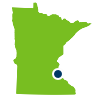
Site Highlight: Lost Valley Prairie SNA
By Kelly Randall, SNA Outreach Coordinator
|
When I think of Lost Valley Prairie SNA the word unicorn comes to mind. I'm not thinking of mythical beasts roaming the landscape here, but the unique people and projects that have shaped this special place.
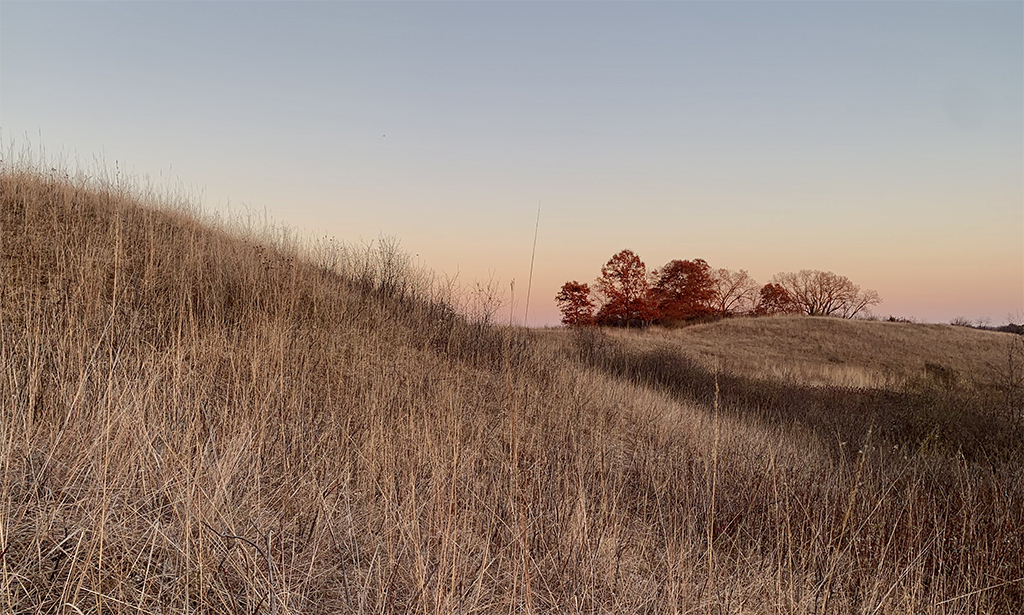 Late fall sunset highlights the prairie hills at Lost Valley Prairie SNA. Photo by Kelly Randall.
The path to protection for Lost Valley Prairie began in 1987 when the Minnesota Biological Survey recognized significant bluff prairie and found rare rock sandwort (Minuartia dawsonensis) on the site.
By August of 1990, 200 acres with a mix of bedrock bluff prairie, brushy thickets, woodlots, and agricultural fields became the Lost Valley Prairie Scientific and Natural Area. Restoration and reconstruction efforts began soon after designation, which enhanced and buffered the core areas of native prairie. Techniques such as prescribed fire, invasive species control, and woody removal all improved habitat for native species and helped to restore natural processes. In a word, transformation became a hallmark of this SNA.
Starting that same month volunteers began helping SNA staff cut red cedar off the prairie. By fall, volunteers were collecting native prairie seed from the site to be use in planned restorations. The old field beyond the entrance gate was up first. Jim Smetana, as a volunteer and then site steward for the SNA, eagerly put in hour after hour to enhance the site. He started regular volunteer stewardship projects, events that continue today, with a cadre of folks who pull invasives, cut woody brush, and collect seed among other tasks. Over the years Steve Poole, Sara Brokaw, and most recently Laura Baxley joined Jim as stewards. This site is a unicorn in the SNA program thanks to the unmatched level of support from its volunteers and their commitment to transforming the landscape.
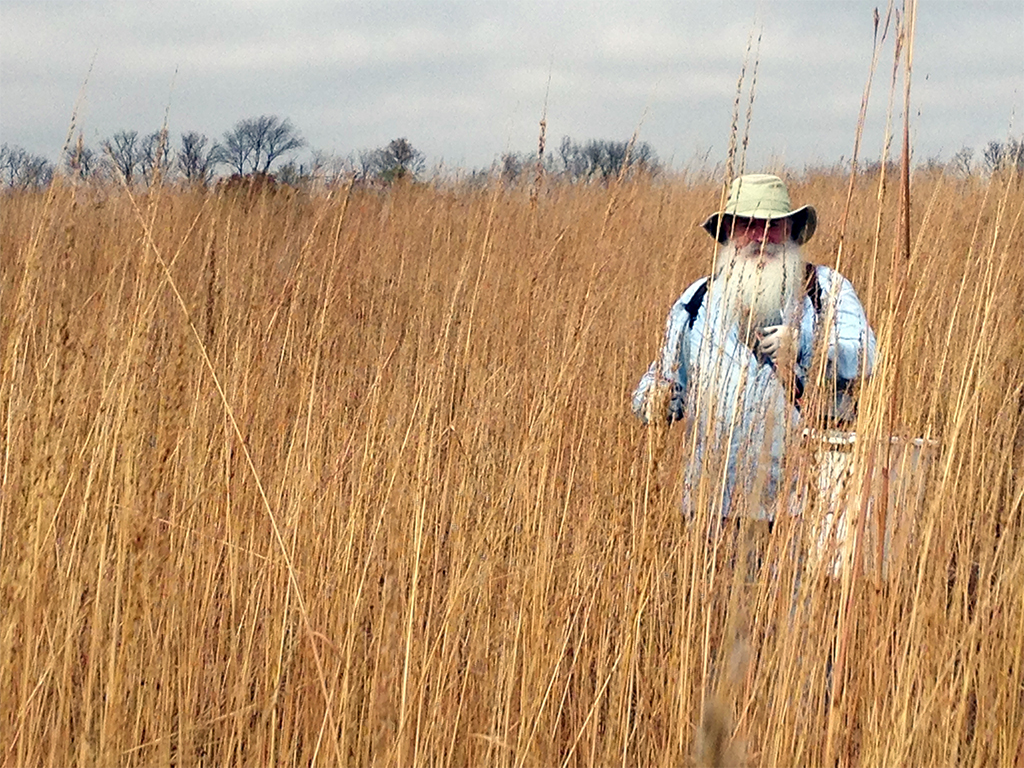 Jim Smetana, first site steward at Lost Valley Prairie SNA, collects seed in an early prairie reconstruction. Photo by Kelly Randall.
Habitat enhancements continued. Old fields and later wood lots became prairie reconstructions. Cut plum and sumac thickets became open ground where sunlight encouraged the prairie to rebound. Periodic prescribed burns invigorated this fire-dependent prairie community while keeping invasive species in check.
In November of 2009 another 120 acres were added. Again, a mix of prairie, fields, and woodlots (mostly pine plantations) sat like a top hat on the north side of the existing SNA. The process of transformation continued.
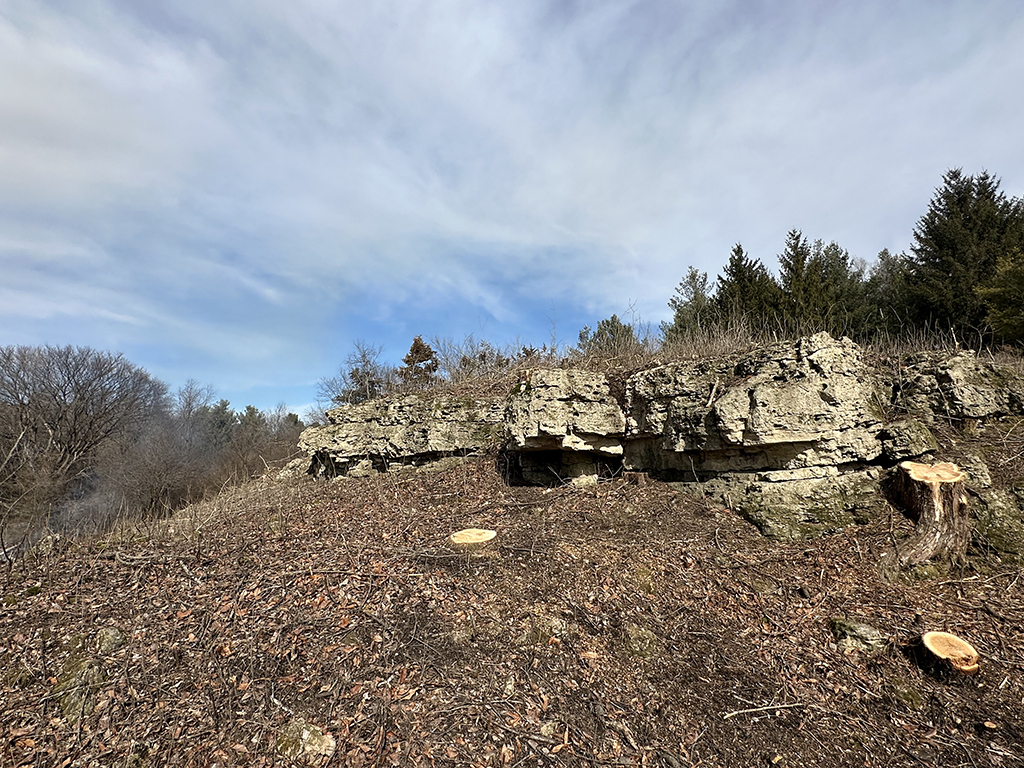 Rock outcrop with freshly cut stumps of eastern red cedar. Note the pine plantation in the background. Photo by Kelly Randall.
Today this site, now a 320-acre SNA in southern Washington County, showcases native prairie and enhanced habitat just 20 miles from downtown Saint Paul. Major transformations are ongoing, including a project to harvest all the marketable pine plantations on the SNA beginning this year. Looking forward there will be many opportunities to continue enhancing this fine site.
If you are looking for somewhere to enjoy an outstanding native bedrock bluff prairie and see the intensive work being done to buffer it with prairie reconstructions, plan a visit to Lost Valley Prairie SNA. Better yet, get out and volunteer on a stewardship project to contribute to a unicorn among Scientific and Natural Areas.
Back to top
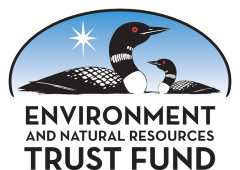
Environment and Natural Resources Trust Fund
The Legislative-Citizen Commission on Minnesota Resources (LCCMR) is a panel made up of legislators and expert citizens dedicated to making funding recommendations for statewide natural resources and conservation projects. Most of the funding the commission reviews comes from the Environment and Natural Resources Trust Fund (ENRTF), which draws proceeds from the Minnesota state lottery. The scientific and natural areas program gets much of its funding from LCCMR recommendations to continue protecting Minnesota’s natural places. ENRTF funding allows the SNA program to acquire sites of rare ecological value, execute restoration and reconstruction projects, and continue outreach efforts to better preserve Minnesota’s unique nature for future generations.
LCCMR is gathering input about the future of Minnesota Environment and Natural Resources Trust Fund spending, so make your voice heard about how to improve Minnesota's environment and natural resources. Take this brief survey about what environmental issues matter most to you!
|

Staff Highlight: Dave Jungst
Dave Jungst has been with the SNA program since August of 2019. As the native prairie bank acquisitions specialist for the SNA program, Dave Jungst identifies native prairie communities and connects with landowners to establish conservation easements to protect these rare ecosystems.
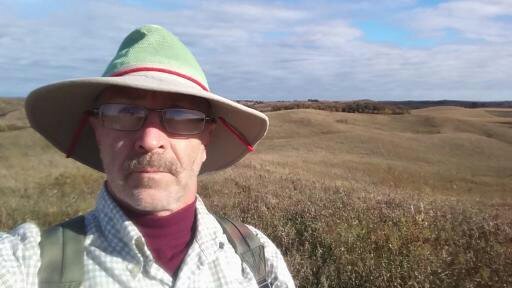
Why do you do this work?
I’ve lived in the tallgrass prairie and oak savanna ecosystems for most of my life, so they’re a part of who I am. It gives me a great reason to do this work. It makes me feel good to help landowners protect these rare areas for the future. It’s fulfilling to know that others can grow to love and care for these areas, and the species that thrive there can have a home. The best part of my job is spending time searching for and exploring remnant native prairies because of all the beautiful diversity of flora and fauna to discover, observe, document, and enjoy.
What are the challenges of this line of work?
Trying to find parcels that will get enrolled in the Native Prairie Bank program can be, as the saying goes, like looking for a needle in a haystack. There is only about 2% of the original prairie remaining in Minnesota, so finding a parcel is difficult, finding one that is high enough quality to be accepted into the program is even harder, and finding a spot that is not already protected with a landowner who is willing to put a permanent easement on it is a real challenge.
It’s pretty neat to find a high-quality remnant native prairie because they’re so rare. Sometimes threatened or endangered species live there. Working with the landowner to permanently protect it with an easement is very gratifying.
What is your favorite native Minnesota plant or animal (and why)?
I have many favorites but one of them is Pediomelum esculentum (Prairie Turnip). The French called it Pomme de Terre (fruit of the earth). I live near the Pomme de Terre River, which is named for this plant. The Dakota name for it is Tipsinah. The Lakota name for it is Timpsila. The indigenous peoples came to this area to find this plant and harvest its edible starchy root.
What is your favorite way to spend time outdoors (and why)?
I just love being outside and enjoying all of nature and its beauty in all seasons of the year — whether I’m hiking, biking, skiing, canoeing, picking native seeds or fruit, hunting, fishing, cutting wood, or photographing nature.
What is your favorite SNA (and why)?
One of my favorites is Clinton Prairie SNA. It’s not every day you can see a quarter section (160 acres) of tallgrass prairie that was never broken up, and it has Regal Fritillary butterflies which are one of my favorite animals.
Back to top
Research Roundup
Scientific and natural areas are uniquely suited to contribute to our understanding of the natural world, and a key aspect of the program is allowing research by permit on SNA sites. In 2023 the SNA Program approved 59 independent research proposals. So far in 2024 the DNR has approved research permits for numerous projects that contribute to a better understanding of Minnesota’s flora, fauna, fungi, and waters. These projects help answer important questions about Minnesota’s biota and help the SNA Program manage the state’s natural resources effectively.
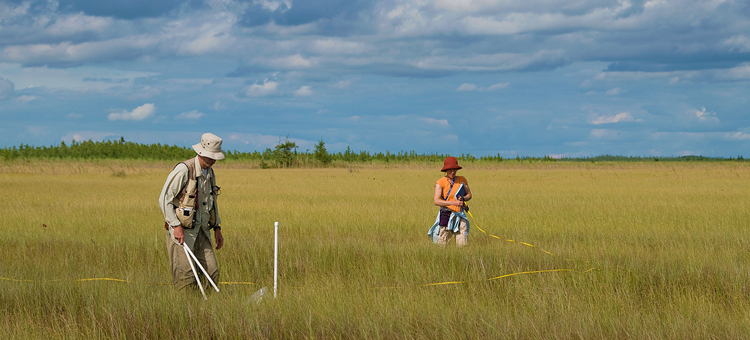
A few research projects of interest so far in 2024:
- A researcher with Carleton College and students will be looking at springs in southeastern Minnesota to identify factors affecting groundwater quality.
- DNR researchers will be collecting feathers and fecal pellets to look at the impact of neonicotinoid exposure on prairie-chicken hen, nest, and brood survival as it relates to landscape use in northwestern Minnesota.
- A researcher with the University of North Dakota will be testing the use of bioacoustics to identify birds, insects, amphibians, and mammals.
- A researcher with the University of Kansas Herbarium will be working with SNA staff to explore lichen diversity of SNAs in western Minnesota as part of the Great Plains Lichen Flora Project.
- A University of Minnesota researcher and students will be examining the fungi of old growth forests at SNAs across the state.
Notes from Site Stewards
Site stewards monitor SNAs across Minnesota. Their observations provide valuable information to the SNA Program. Summer prairie visits were regularly reported, with a variety of observations and tasks completed.
- At Grey Cloud Dunes SNA, site steward Carolyn Carr spent time removing trash and spotted knapweed throughout the SNA last summer and fall. Removing spotted knapweed is an important practice for supporting the native plant communities in the SNA.
-
David Glaser spent time visiting Iona’s Beach SNA this January. He captured a beautiful photo of the site’s icy basalt outcrop overlooking Lake Superior.
- On February 24th, Lost Valley Prairie SNA’s newest site steward Laura Baxley helped to cut brush and create burn piles. Those visiting the SNA this year might catch a glimpse of the prairie restoration work currently taking place by DNR staff with support from contractors and site stewards.
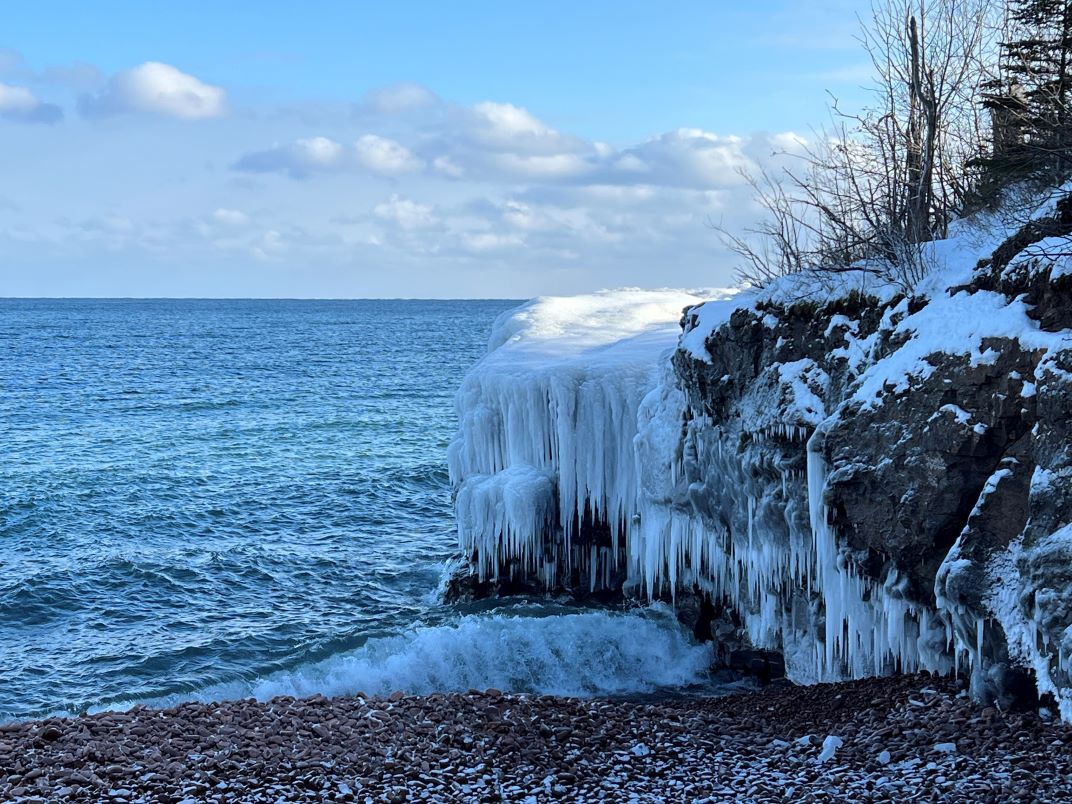 The basalt outcrop at Iona's Beach SNA covered in icicles overlooking Lake Superior. Photo by David Glaser.
 A volunteer adding brush to a large pile of woody debris at Lost Valley Prairie SNA. Photo by Laura Baxley.
Back to top
SNA Events
Looking for a fun way to give back this spring? Get out and help on stewardship projects on an SNA at one of these events. A full up-to-date list can be found on the SNA events calendar.
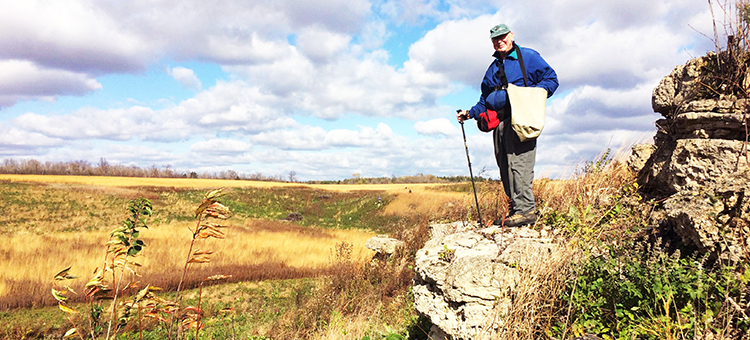
04/20/2024 April Stewardship Project: Earth Day Lost Valley Prairie SNA
05/11/24 Wildflower Walk Lawrence Creek SNA
05/21/2024 Volunteer Stewardship Event: Buckthorn Pull Mille Lacs Moraine SNA
05/25/24 Volunteer Stewardship Project: Garlic Mustard Pull Wood-Rill SNA
05/25/2024 May Stewardship Project Lost Valley Prairie SNA
06/01/2024 Wildflower Hunt Hemlock Ravine SNA
06/08/24 Volunteer Stewardship Project: Sumac Removal Grey Cloud Dunes SNA
06/15/24 Volunteer Stewardship Project: Dames Rocket Pull Clinton Falls Dwarf Trout Lily SNA
|